Solar eclipse of August 24, 2082
A total solar eclipse will occur on August 24, 2082. A solar eclipse occurs when the Moon passes between Earth and the Sun, thereby totally or partly obscuring the image of the Sun for a viewer on Earth. A total solar eclipse occurs when the Moon's apparent diameter is larger than the Sun's, blocking all direct sunlight, turning day into darkness. Totality occurs in a narrow path across Earth's surface, with the partial solar eclipse visible over a surrounding region thousands of kilometres wide.
| Solar eclipse of August 24, 2082 | |
|---|---|
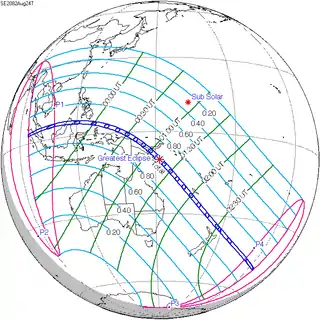 Map | |
| Type of eclipse | |
| Nature | Total |
| Gamma | -0.4004 |
| Magnitude | 1.0452 |
| Maximum eclipse | |
| Duration | 241 sec (4 m 1 s) |
| Coordinates | 10.3°S 151.8°E |
| Max. width of band | 163 km (101 mi) |
| Times (UTC) | |
| Greatest eclipse | 1:16:21 |
| References | |
| Saros | 146 (31 of 76) |
| Catalog # (SE5000) | 9692 |
Related eclipses
Solar eclipses 2080–2083
This eclipse is a member of a semester series. An eclipse in a semester series of solar eclipses repeats approximately every 177 days and 4 hours (a semester) at alternating nodes of the Moon's orbit.[1]
| 121 | March 21, 2080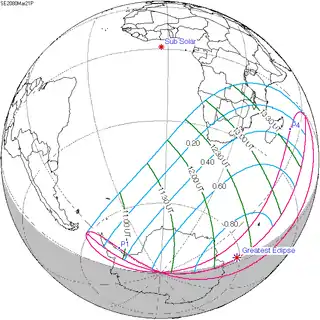 Partial |
126 | September 13, 2080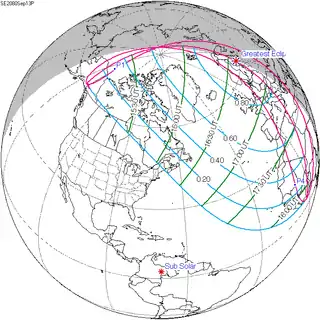 Partial |
| 131 | March 10, 2081 Annular |
136 | September 3, 2081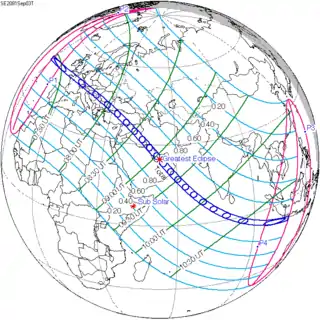 Total |
| 141 | February 27, 2082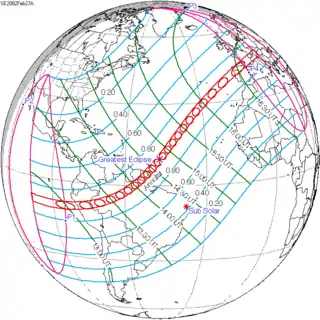 Annular |
146 | August 24, 2082 Total |
| 151 | February 16, 2083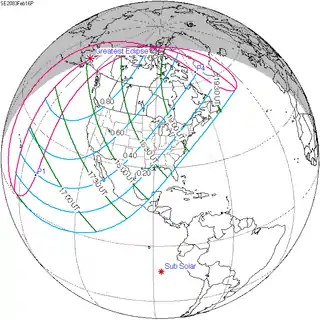 Partial |
156 | August 13, 2083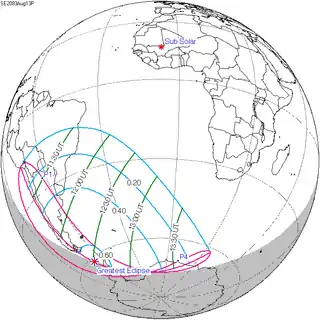 Partial |
Saros 146
It is a part of Saros cycle 146, repeating every 18 years, 11 days, containing 76 events. The series started with partial solar eclipse on September 19, 1541. It contains total eclipses from May 29, 1938 through October 7, 2154, hybrid eclipses from October 17, 2172 through November 20, 2226, and annular eclipses from December 1, 2244 through August 10, 2659. The series ends at member 76 as a partial eclipse on December 29, 2893. The longest duration of totality was 5 minutes, 21 seconds on June 30, 1992.
| Series members 21-37 occur between 1901 and 2200: | ||
|---|---|---|
| 21 | 22 | 23 |
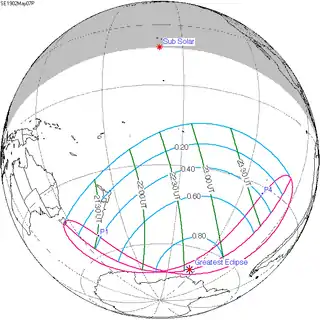 May 7, 1902 |
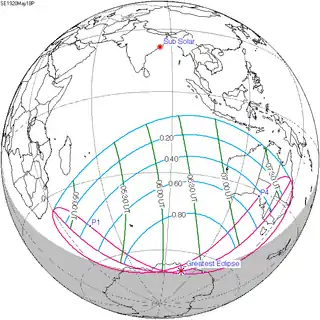 May 18, 1920 |
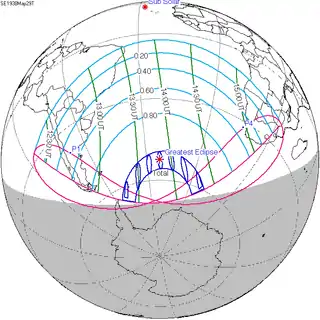 May 29, 1938 |
| 24 | 25 | 26 |
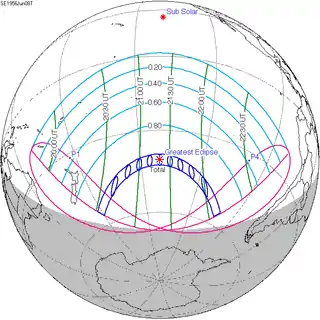 June 8, 1956 |
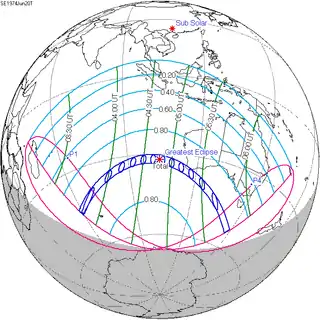 June 20, 1974 |
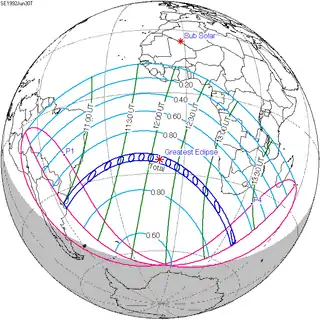 June 30, 1992 |
| 27 | 28 | 29 |
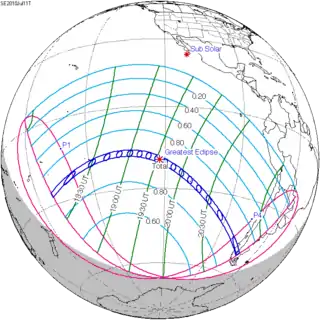 July 11, 2010 |
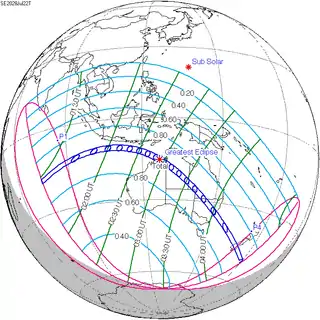 July 22, 2028 |
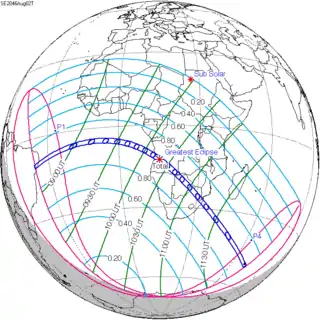 August 2, 2046 |
| 30 | 31 | 32 |
 August 12, 2064 |
 August 24, 2082 |
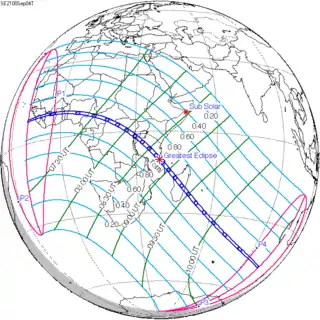 September 4, 2100 |
| 33 | 34 | 35 |
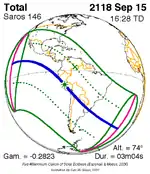 September 15, 2118 |
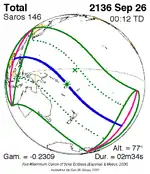 September 26, 2136 |
 October 7, 2154 |
| 36 | 37 | |
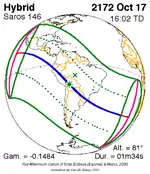 October 17, 2172 |
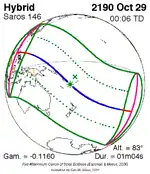 October 29, 2190 | |
Metonic cycle
The metonic series repeats eclipses every 19 years (6939.69 days), lasting about 5 cycles. Eclipses occur in nearly the same calendar date. In addition, the octon subseries repeats 1/5 of that or every 3.8 years (1387.94 days).
| 21 eclipse events between June 12, 2029 and June 12, 2105 | ||||
|---|---|---|---|---|
| June 11–12 | March 30–31 | January 16 | November 4–5 | August 23–24 |
| 118 | 120 | 122 | 124 | 126 |
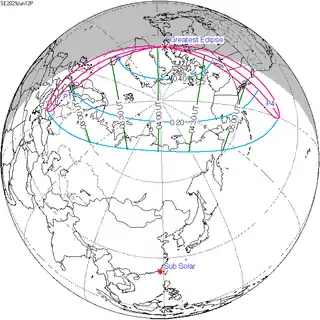 June 12, 2029 |
 March 30, 2033 |
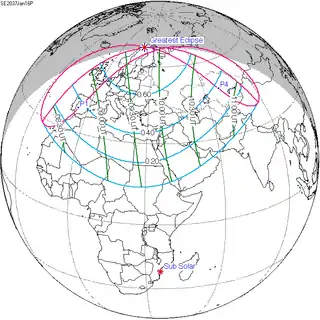 January 16, 2037 |
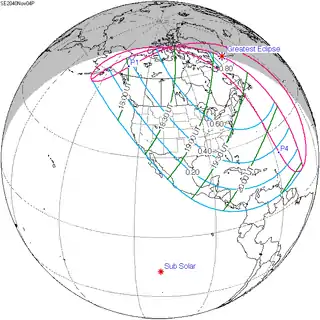 November 4, 2040 |
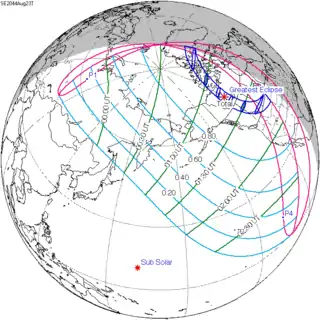 August 23, 2044 |
| 128 | 130 | 132 | 134 | 136 |
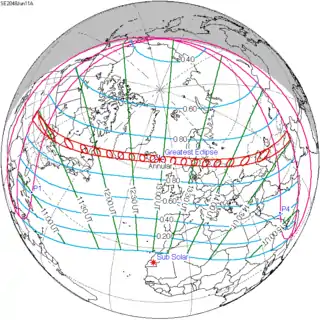 June 11, 2048 |
 March 30, 2052 |
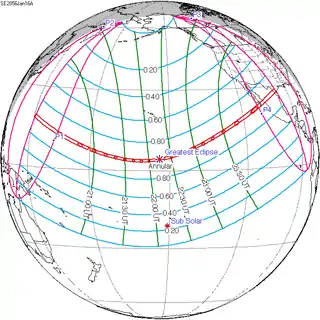 January 16, 2056 |
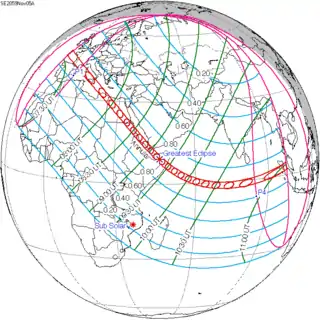 November 5, 2059 |
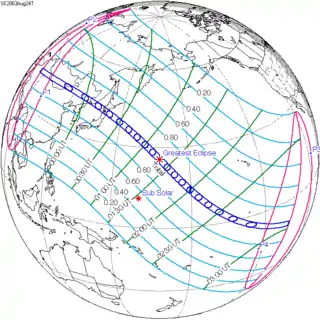 August 24, 2063 |
| 138 | 140 | 142 | 144 | 146 |
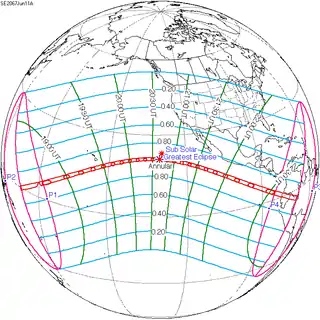 June 11, 2067 |
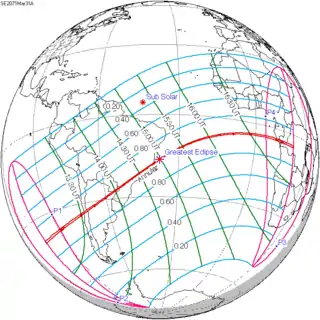 March 31, 2071 |
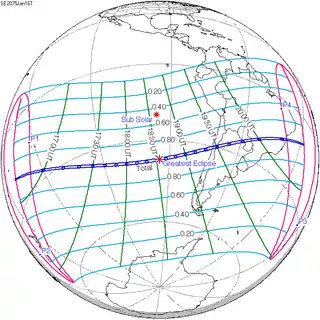 January 16, 2075 |
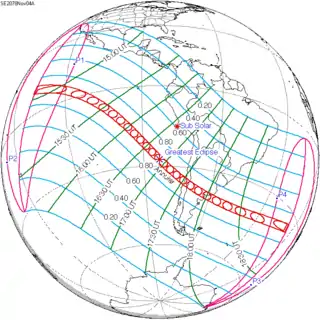 November 4, 2078 |
 August 24, 2082 |
| 148 | 150 | 152 | 154 | |
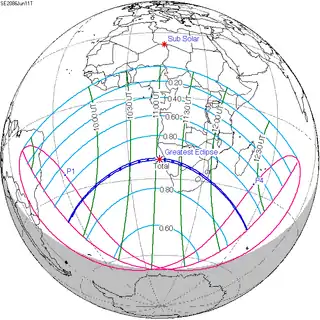 June 11, 2086 |
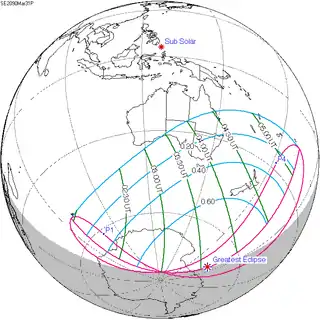 March 31, 2090 |
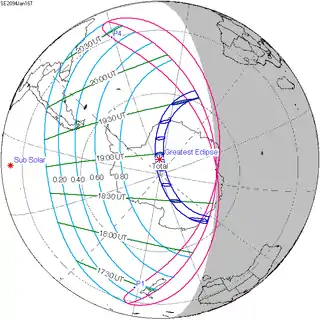 January 16, 2094 |
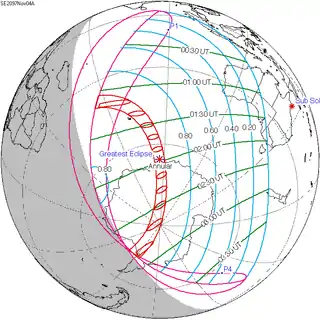 November 4, 2097 | |
Notes
- van Gent, R.H. "Solar- and Lunar-Eclipse Predictions from Antiquity to the Present". A Catalogue of Eclipse Cycles. Utrecht University. Retrieved 6 October 2018.
References
- Earth visibility chart and eclipse statistics Eclipse Predictions by Fred Espenak, NASA/GSFC
.jpg.webp)

